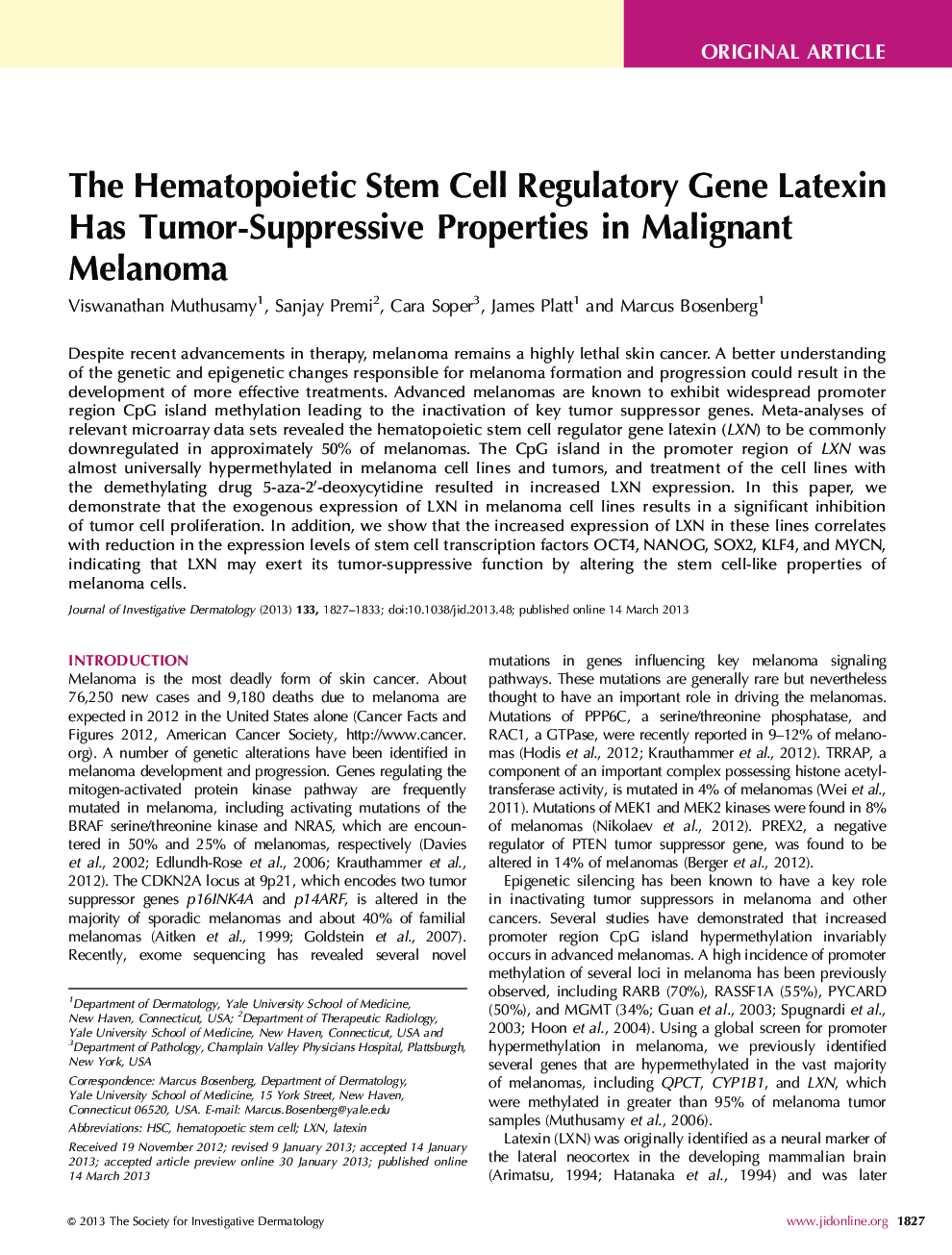| Article ID | Journal | Published Year | Pages | File Type |
|---|---|---|---|---|
| 6077647 | Journal of Investigative Dermatology | 2013 | 7 Pages |
Abstract
Despite recent advancements in therapy, melanoma remains a highly lethal skin cancer. A better understanding of the genetic and epigenetic changes responsible for melanoma formation and progression could result in the development of more effective treatments. Advanced melanomas are known to exhibit widespread promoter region CpG island methylation leading to the inactivation of key tumor suppressor genes. Meta-analyses of relevant microarray data sets revealed the hematopoietic stem cell regulator gene latexin (LXN) to be commonly downregulated in approximately 50% of melanomas. The CpG island in the promoter region of LXN was almost universally hypermethylated in melanoma cell lines and tumors, and treatment of the cell lines with the demethylating drug 5-aza-2â²-deoxycytidine resulted in increased LXN expression. In this paper, we demonstrate that the exogenous expression of LXN in melanoma cell lines results in a significant inhibition of tumor cell proliferation. In addition, we show that the increased expression of LXN in these lines correlates with reduction in the expression levels of stem cell transcription factors OCT4, NANOG, SOX2, KLF4, and MYCN, indicating that LXN may exert its tumor-suppressive function by altering the stem cell-like properties of melanoma cells.
Related Topics
Health Sciences
Medicine and Dentistry
Dermatology
Authors
Viswanathan Muthusamy, Sanjay Premi, Cara Soper, James Platt, Marcus Bosenberg,
